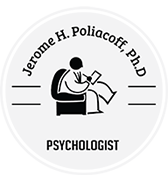Researchers at the National Institutes of Health have found overactivation in many brain regions, including the frontal and parietal lobes and the amygdala, in unmedicated children with anxiety disorders. They also showed that treatment with cognitive behavioral therapy (CBT) led to improvements in clinical symptoms and brain functioning. The findings illuminate the brain mechanisms underlying the acute effects of CBT to treat one of the most common mental disorders. The study, published in the American Journal of Psychiatry, was led by researchers at NIH’s National Institute of Mental Health (NIMH).
“We know that CBT is effective. These findings help us understand how CBT works, a critical first step in improving clinical outcomes,” said senior author Melissa Brotman, Ph.D., Chief of the Neuroscience and Novel Therapeutics Unit in the NIMH Intramural Research Program.
Sixty-nine unmedicated children diagnosed with an anxiety disorder underwent 12 weeks of CBT following an established protocol. CBT, which involves changing dysfunctional thoughts and behaviors through gradual exposure to anxiety-provoking stimuli, is the current gold standard for treating anxiety disorders in children.
The researchers used clinician-rated measures to examine the change in children’s anxiety symptoms and clinical functioning from pre- to post-treatment. They also used task-based fMRI to look at whole-brain changes before and after treatment and compare those to brain activity in 62 similarly aged children without anxiety.
Children with anxiety showed greater activity in many brain regions, including cortical areas in the frontal and parietal lobes, which are important for cognitive and regulatory functions, such as attention and emotion regulation. The researchers also observed elevated activity in deeper limbic areas like the amygdala, which are essential for generating strong emotions, such as anxiety and fear.
CLICK HERE to read more.


